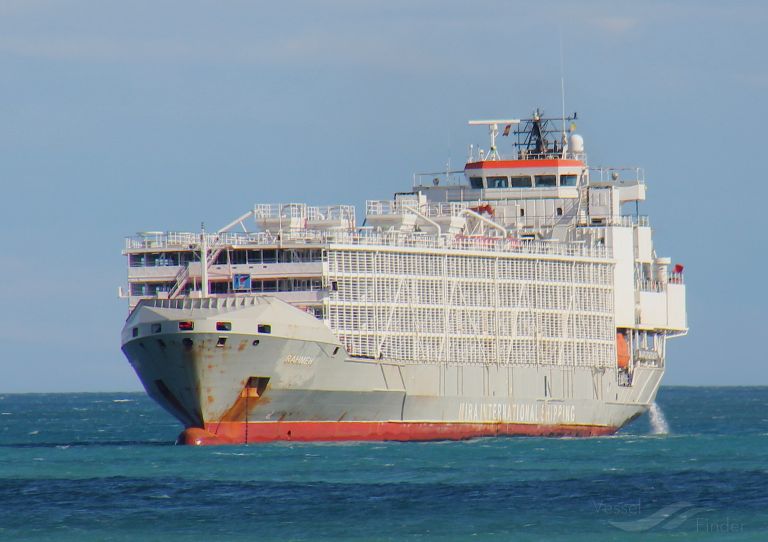Ship carrying 43 crew members and almost 6,000 cattle missing in typhoon off Japan
A ship carrying 43 crew members and nearly 6,000 cattle from New Zealand to China has capsized after losing an engine in stormy weather in the East China Sea, the only crew member rescued so far told the Japan Coast Guard (JCG) Thursday.

The Gulf Livestock 1 sent a distress call from west of Amami Oshima island Wednesday as Typhoon Maysak headed through the region towards the Korean peninsula, bringing strong winds, heavy seas and drenching rains.
The JCG said it had rescued one crew member, Sareno Edvarodo, a 45-year-old chief officer from the Philippines, on Wednesday night while searching for the ship.
According to Edvarodo, the ship lost an engine before it was hit by a wave and capsized, a coastguard spokeswoman said.
When the ship capsized, crew were instructed to put on life jackets. Edvarodo told the coastguard he jumped into the water and did not see any other crew members before he was rescued.
Pictures provided by the JCG showed a person in a life jacket being hauled from choppy seas in darkness.
Three vessels, five airplanes and two divers had been deployed to continue the search, the coastguard said.
The crew included 39 people from the Philippines, two from New Zealand and two from Australia, it added.
The Philippines government said it was coordinating with Japan’s Coastguard as it searched for the missing crew members ahead of another typhoon expected to hit the area.
Typhoon Haishen was already in the northwest Pacific, tracking through the East China Sea towards South Korea.
At least one person was reported killed in South Korea after Typhoon Maysak made landfall Thursday when strong winds shattered a window in the southern city of Busan.
The Gulf Livestock 1 departed Napier in New Zealand on Aug. 14 with a cargo of 5,867 cattle bound for the Port of Jingtang in Tangshan, China. The journey was expected to take about 17 days, New Zealand’s foreign ministry told Reuters.
New Zealand animal rights organization SAFE said the tragedy demonstrated the risks of the live animal export trade.
“These cows should never have been at sea,” said campaign manager Marianne Macdonald.
“This is a real crisis, and our thoughts are with the families of the 43 crew who are missing with the ship. But questions remain, including why this trade is allowed to continue.”
Last year, New Zealand’s government launched a review of the country’s live export trade, which was worth around NZ$54 million ($37 million) in 2019, after thousands of animals being exported from New Zealand and Australia died in transit.
A conditional ban on the live export of cattle was one of several options being considered, Agriculture Minister Damien O’Connor said.
Source: JapanTimes